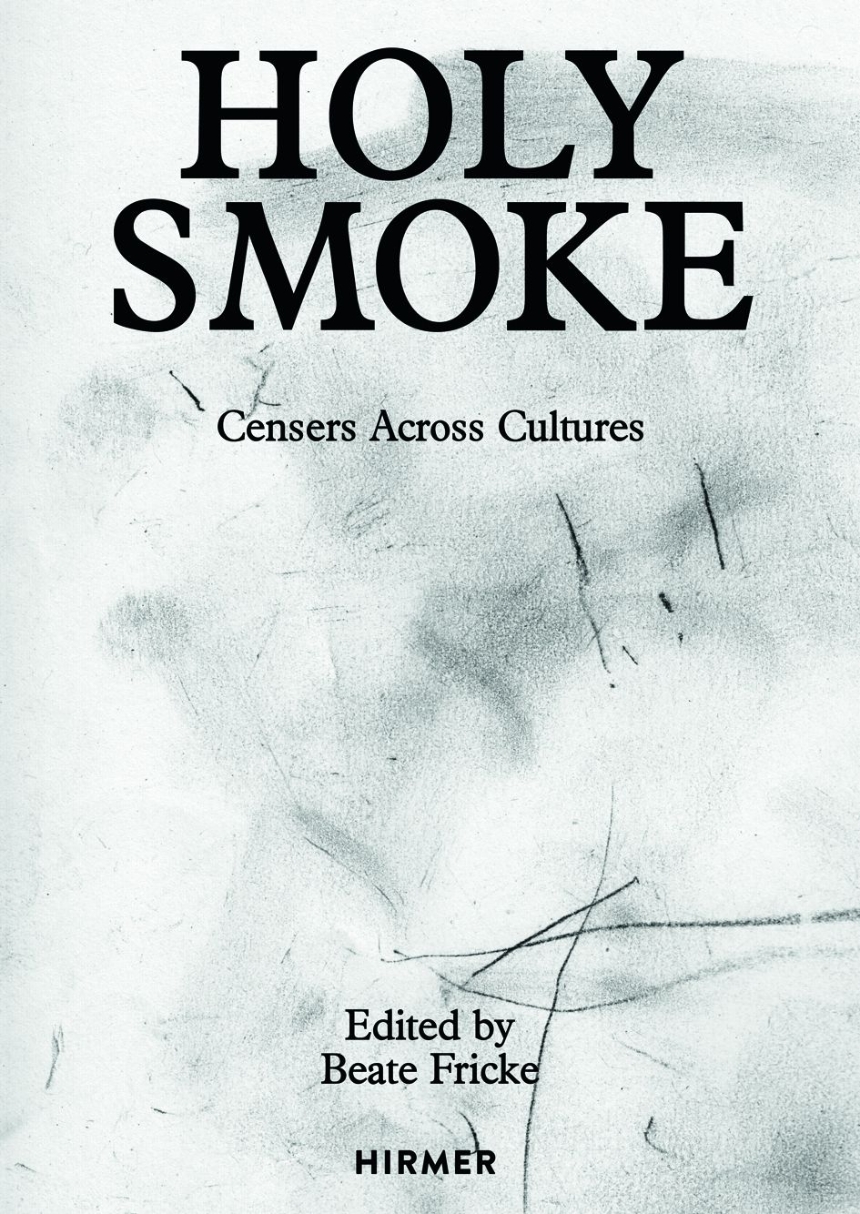Draws on religious art from four continents to investigate the materiality of the sacred.
Burning incense has been a widespread religious practice throughout history and remains so today. The censer and its fragrant, wafting smoke are a basic material exchange between humans and gods and can be found across historical periods, religions, and cultures. Surprisingly, however, little scholarly attention has been given to censers and the rituals they facilitate.
Holy Smoke: Censers Across Cultures investigates the practice of incense—the use of material objects to communicate with the divine—in religious contexts. The book considers the material fabrication of censers themselves, as well as the role of incense within religious ceremonies. Centering the censer not only places the object in a constellation of other religious artifacts, but also relocates rituals long relegated to the margins of religion, art, and ritual. This broad, comparative study will interest scholars in the fields of art history, archaeology, cultural history, anthropology, religious studies, and performance studies.
Burning incense has been a widespread religious practice throughout history and remains so today. The censer and its fragrant, wafting smoke are a basic material exchange between humans and gods and can be found across historical periods, religions, and cultures. Surprisingly, however, little scholarly attention has been given to censers and the rituals they facilitate.
Holy Smoke: Censers Across Cultures investigates the practice of incense—the use of material objects to communicate with the divine—in religious contexts. The book considers the material fabrication of censers themselves, as well as the role of incense within religious ceremonies. Centering the censer not only places the object in a constellation of other religious artifacts, but also relocates rituals long relegated to the margins of religion, art, and ritual. This broad, comparative study will interest scholars in the fields of art history, archaeology, cultural history, anthropology, religious studies, and performance studies.
Table of Contents
INTRODUCTION: CENSERS ACROSS CULTURES
Beate Fricke
THE ART OF SMOKE AND FIRE: BRAZIERS AND CENSERS IN MESOAMERICAN TRADITION
Claudia Brittenham
“I BURN AS INCENSE FOR YOU”: CENSERS IN ASSYRIA AND BEYOND
Kiersten Neumann
CENSERS REAL AND IMAGINED: JEWS AND INCENSE FROM ANTIQUITY THROUGH THE PRESENT
Karen Stern
THE INCENSE BURNER IN GREEK ART OF THE FIFTH CENTURY BCE
Milette Gaifman
VESSELS OF HOLY FIRE: THE CENSER AND THE WOMB OF THE MOTHER OF GOD IN EARLY BYZANTINE AND COPTIC DEVOTION
Nathan Dennis
BETWEEN MATTER AND MAGIC, OVER LAND AND SEA: A MIDDLE EASTERN CENSER IN SWEDEN
Margaret Graves
SWINGING THROUGH TIME: CENSERS IN THE LATIN WEST
Beate Fricke
THE CENSER IN AND AFTER THE REFORMATION: AUTHORITY, REBELLION, TRANSGRESSION
Allison Stielau
VISUALIZING THE INCENSE SMOKE: THE PORTRAIT OF THE MING EMPEROR XIZONG (1605–1627) Yao Ning
THE SUBSTANCE OF INCENSE FROM ROMAN ANTIQUITY TO THE MIDDLE AGES
Béatrice Caseau & Claire-Marie Caseau
AFTERWORD: CENSERS AND SENSATION
Jaś Elsner
BIOGRAPHIES
GLOSSARY
INDEX
Beate Fricke
THE ART OF SMOKE AND FIRE: BRAZIERS AND CENSERS IN MESOAMERICAN TRADITION
Claudia Brittenham
“I BURN AS INCENSE FOR YOU”: CENSERS IN ASSYRIA AND BEYOND
Kiersten Neumann
CENSERS REAL AND IMAGINED: JEWS AND INCENSE FROM ANTIQUITY THROUGH THE PRESENT
Karen Stern
THE INCENSE BURNER IN GREEK ART OF THE FIFTH CENTURY BCE
Milette Gaifman
VESSELS OF HOLY FIRE: THE CENSER AND THE WOMB OF THE MOTHER OF GOD IN EARLY BYZANTINE AND COPTIC DEVOTION
Nathan Dennis
BETWEEN MATTER AND MAGIC, OVER LAND AND SEA: A MIDDLE EASTERN CENSER IN SWEDEN
Margaret Graves
SWINGING THROUGH TIME: CENSERS IN THE LATIN WEST
Beate Fricke
THE CENSER IN AND AFTER THE REFORMATION: AUTHORITY, REBELLION, TRANSGRESSION
Allison Stielau
VISUALIZING THE INCENSE SMOKE: THE PORTRAIT OF THE MING EMPEROR XIZONG (1605–1627) Yao Ning
THE SUBSTANCE OF INCENSE FROM ROMAN ANTIQUITY TO THE MIDDLE AGES
Béatrice Caseau & Claire-Marie Caseau
AFTERWORD: CENSERS AND SENSATION
Jaś Elsner
BIOGRAPHIES
GLOSSARY
INDEX

